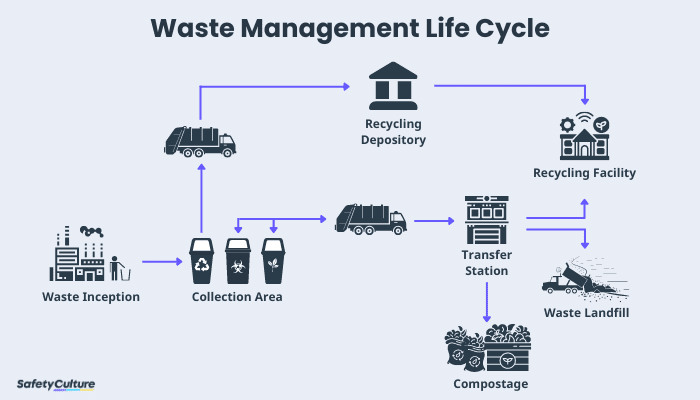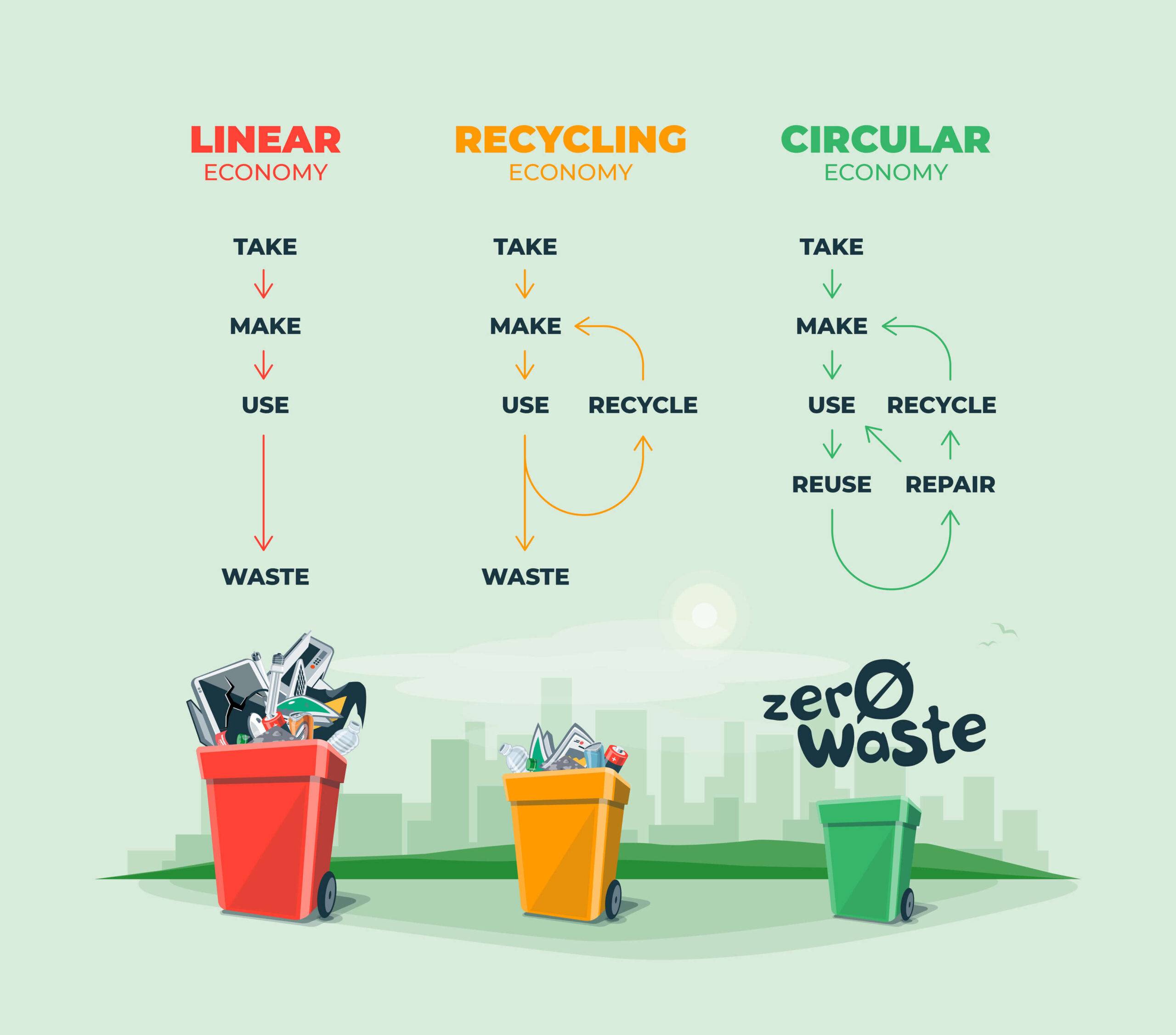Just How Recycling Lives Services Help In Reducing Environmental Impacts
Just How Recycling Lives Services Help In Reducing Environmental Impacts
Blog Article
Exploring Different Types of Waste in Modern Waste Monitoring Systems
The modern landscape of waste administration entails navigating a complicated selection of waste kinds, each requiring specialized handling and disposal approaches to mitigate environmental effects. Local strong waste, harmful waste, digital waste, and organic waste each present unique obstacles and chances for source recuperation.
Metropolitan Strong Waste
Local solid waste, usually referred to as house garbage or trash, incorporates a variety of discarded materials generated by residential, business, and institutional resources within a district. This waste stream typically includes items such as product packaging, food scraps, backyard trimmings, paper, plastics, fabrics, and thrown out house items. The monitoring of community solid waste is an important element of metropolitan planning and public health, demanding reliable collection, transport, and disposal systems.
Efficient waste management systems are designed to decrease ecological impact while making best use of source recovery. This typically includes a combination of methods consisting of recycling, composting, and landfilling. Reusing programs target products like paper, glass, steels, and specific plastics, diverting them from land fills and reestablishing them right into the production cycle. Composting natural waste, such as food scraps and lawn trimmings, not just decreases landfill use but additionally creates important dirt changes.
Communities have to additionally address the logistical and financial challenges connected with waste management. Applying pay-as-you-throw systems, enhancing public understanding, and spending in technology can significantly boost waste diversion rates. By integrating these techniques, municipalities can promote lasting communities, lower greenhouse gas emissions, and save natural deposits.
Contaminated Materials
Reliable contaminated materials management includes numerous crucial actions: identification, disposal, therapy, and segregation. Recognition entails the classification of waste based on its harmful residential or commercial properties. Segregation guarantees that unsafe products are stored individually from non-hazardous waste to avoid cross-contamination. Treatment techniques, such as chemical neutralization, incineration, and stablizing, are used to lower the poisoning, quantity, or movement of the waste. Lastly, disposal alternatives, consisting of safe and secure landfills and underground storage, are chosen to make certain long-term containment.
Regulatory structures, such as the Source Conservation and Healing Act (RCRA) in the United States, supply guidelines and requirements for dangerous waste monitoring. Adherence to these regulations, paired with developments in waste therapy innovations, is necessary in reducing the risks connected with contaminated materials.
Digital Waste
Electronic waste, commonly described as e-waste, stands for a quickly expanding obstacle in waste monitoring systems globally. This sort of waste includes disposed of electronic gadgets and equipment such as smartphones, computer systems, televisions, and various other electronic devices. The rapid rate of technological innovation, coupled with lowering product life expectancies and customer demand for the most recent devices, has actually significantly raised the volume of e-waste generated yearly.
E-waste is especially troublesome because of its complicated structure, frequently containing visit this web-site hazardous substances like cadmium, lead, and mercury, which pose significant environmental and health and wellness risks if not properly taken care of. Conversely, e-waste also includes beneficial products such as copper, gold, and silver, which can be recouped and reused. The twin nature of e-waste-- both important and dangerous-- necessitates specialized handling, recycling, and disposal processes.
Effective e-waste monitoring entails stringent regulatory structures, durable collection systems, and progressed reusing modern technologies. Public recognition and engagement are vital, as inappropriate disposal techniques, such as prohibited discarding and casual recycling, worsen ecological contamination and carcinogen. Consequently, enhancing e-waste monitoring techniques is crucial for alleviating environmental impact and recovering beneficial resources in a progressively digital world.

Organic Waste
Organic waste, making up cooking area scraps, yard trimmings, and agricultural deposits, stands for a significant part of the international waste stream. This sort of waste is naturally degradable, meaning it can be broken down by microbes into simpler natural substances. Regardless of its potential for natural decay, incorrect administration of organic waste can result in damaging ecological effects, consisting of the emission of greenhouse gases such as methane, which add to climate adjustment.
Effective monitoring of natural waste is important for decreasing these ecological influences (recycling lives services). Composting is a commonly taken on approach, transforming natural waste right into nutrient-rich garden compost that can boost dirt health and agricultural performance. Additionally, anaerobic digestion is an arising technology that transforms natural waste into biogas, a renewable resource resource, and digestate, which can be utilized as plant food
Municipalities and waste management entities should apply robust organic waste collection and therapy programs to maximize the advantages of these processes. Public education campaigns can likewise play a crucial role in encouraging homes and services to separate organic waste from various other sorts of waste. By focusing on the management of natural waste, cultures can reduce garbage dump use, reduced greenhouse gas exhausts, and produce important results for agricultural use.

Cutting-edge Waste Management
In the world of waste monitoring, innovative methods are changing exactly how societies manage their refuse, aiming for sustainability and efficiency. One prominent technology is the execution of smart waste bins geared up with sensing units that check fill degrees and optimize collection routes.
One more notable growth is the fostering of waste-to-energy (WtE) innovations. By transforming non-recyclable waste right pop over to this site into usable power with procedures such as incineration and anaerobic digestion, WtE reduces landfill worry and supplies a sustainable power resource. Advancements in chemical recycling permit for the malfunction of intricate plastics into their original monomers, making it possible for the production of new, high-grade plastic products.
Moreover, the round economic climate model is getting traction, stressing the layout of items and systems that prioritize reusability and resource effectiveness. This alternative method urges industries to lessen waste generation from the outset. With these innovative approaches, modern-day waste monitoring systems are not only dealing with the instant difficulties of waste disposal yet likewise leading the way for an extra sustainable future.
Verdict
A comprehensive understanding of community solid waste, contaminated materials, electronic waste, and natural waste, paired with the execution of innovative waste management options, is important for alleviating environmental impacts. Integrating technologies such as clever waste containers and waste-to-energy systems can enhance performance and sustainability. Effective waste management strategies not only foster resource recuperation but also promote public recognition and involvement, inevitably adding to the development of a circular economy.
The contemporary landscape of waste monitoring includes navigating an intricate range of waste kinds, each calling for specialized handling and disposal techniques to minimize ecological influences. Municipal strong waste, unsafe waste, digital waste, and organic waste each existing distinctive obstacles and opportunities for source recovery.Electronic waste, frequently referred to as e-waste, represents a rapidly expanding difficulty in waste management systems globally. Via these try this site ingenious strategies, contemporary waste monitoring systems are not only attending to the immediate difficulties of waste disposal however additionally paving the way for a more sustainable future.
A detailed understanding of municipal strong waste, hazardous waste, electronic waste, and organic waste, coupled with the execution of ingenious waste management options, is essential for reducing environmental effects. (recycling lives services)
Report this page